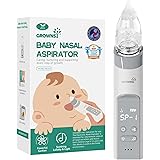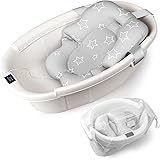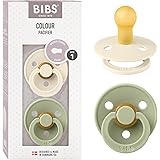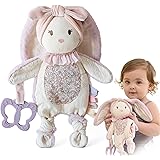Picture this: you’re standing in the baby aisle, a sea of colorful packages stretches before you, each promising the “best wipes for baby” with buzzwords like “natural,” “gentle,” “hypoallergenic,” “aloe vera-infused,” or “bamboo-based.” The sheer volume of choices can be utterly overwhelming, especially when you’re a new parent just trying to make the safest and healthiest decisions for your little one. You want what’s purest for their delicate skin, but how do you cut through the marketing noise to find what truly delivers?
Fortunately, Dr. Jushya Sarin’s insights in the video above offer a clear, pediatrician-backed answer to this common dilemma. While many brands might tout impressive ingredient lists, the truth about the best choice for your baby’s bottom is surprisingly simple and often overlooked. It’s not about the most expensive, the most exotic-sounding, or even the most “natural”-labeled wet wipe on the shelf; it’s about stripping back to basics and understanding what truly nurtures and protects sensitive infant skin.
Understanding the Allure of “Natural” Baby Wipes
The marketing surrounding baby wipes can be incredibly persuasive, often playing on parents’ desires for natural and gentle products. Brands frequently highlight ingredients like aloe vera, chamomile, bamboo, or various plant extracts, creating an impression of superior softness and purity. These claims make a product seem inherently better and safer, leading many parents to believe that a longer, more botanical-sounding ingredient list equates to a healthier choice for their baby. However, what sounds good on a label doesn’t always translate into what’s best for a baby’s remarkably delicate skin barrier.
Despite the enticing promises, many of these “natural” ingredients can still harbor potential irritants or allergens. For instance, while aloe vera is generally soothing for adult skin, it can sometimes trigger reactions in infants with extremely sensitive skin. Furthermore, the processing of these plant-based ingredients often requires additional chemicals, which might not be explicitly listed or fully understood by the average consumer. The sheer number of ingredients in some of these wipes, even “natural” ones, increases the chance of a reaction, acting like a complex puzzle where one wrong piece can cause the whole system to falter.
Why Pure Cotton Tissues and Water Are the Gold Standard
As Dr. Sarin emphatically states, the absolute best wipes for baby are pure cotton tissues used with water. This recommendation might seem almost too simple in a world saturated with specialized products, yet its brilliance lies precisely in its straightforward purity. Imagine trying to clean a delicate porcelain doll; you wouldn’t use harsh chemicals, but rather the gentlest, most fundamental elements. For a baby’s skin, which is far more permeable and reactive than an adult’s, this principle holds even truer.
Opting for pure cotton tissues and water eliminates a vast array of potential irritants found in conventional wet wipes. Cotton is a naturally soft, breathable fiber that is highly absorbent, making it incredibly effective for cleaning. When combined with plain water, it creates a cleaning solution that is truly free from added fragrances, alcohols, preservatives, or chemical emulsifiers that can strip the skin’s natural protective oils. This simple combination respects the integrity of your baby’s skin barrier, minimizing the risk of dryness, redness, irritation, and the dreaded diaper rash, providing unparalleled safety and comfort.
The Power of Purity: No Hidden Irritants
One of the primary benefits of pure cotton and water is its inherent purity. Unlike store-bought wet wipes, which, despite their claims, often contain a cocktail of ingredients designed for preservation, fragrance, and convenience, cotton tissues and water offer a truly allergen-free solution. Many commercial baby wipes, even those labeled “hypoallergenic,” can still contain ingredients that cause contact dermatitis in sensitive babies. These can include certain preservatives (like parabens or methylisothiazolinone), emulsifiers, or even natural extracts that become sensitizing agents for a baby’s immature immune system.
By using 100% pure cotton, you are actively choosing a material that is free from dyes, synthetic fibers, and bleach residue that can sometimes be found in cheaper alternatives. Think of it like cooking: using fresh, whole ingredients often yields a healthier and more satisfying result than relying on processed foods with long lists of additives. Similarly, a baby’s skin thrives on the unadulterated purity of cotton and water, which ensures a gentle touch without introducing any unexpected or harmful compounds that might disrupt their delicate epidermal balance.
Nurturing Sensitive Baby Skin Naturally
A baby’s skin is not just a miniature version of adult skin; it’s fundamentally different and requires specialized care. Their skin barrier is thinner, less resilient, and more permeable, meaning it absorbs substances much more readily and is more susceptible to dryness and irritation. This vulnerability makes ingredient choices critical, as anything applied topically has a greater chance of being absorbed into their system or causing a reaction on the surface. Therefore, nurturing sensitive baby skin naturally means providing it with the simplest, most fundamental care possible.
Using cotton tissues with water supports the skin’s natural healing and protective functions, rather than interfering with them. Water helps to cleanse effectively without stripping the skin of its natural moisture, which is crucial for maintaining a healthy barrier. Cotton provides a soft, non-abrasive surface that cleans gently, avoiding any mechanical irritation. This approach helps prevent common skin issues like diaper rash, eczema flare-ups, and general discomfort, promoting a happy and healthy baby from the bottom up. It’s like giving your baby’s skin a refreshing, pure drink, rather than a sugary, additive-filled soda.
Decoding Wet Wipes: Fragrance-Free vs. Unscented
When the need for convenience arises, such as during travel or emergencies, wet wipes become an invaluable tool. However, even in these situations, selecting the right type is paramount. Dr. Sarin’s advice to choose wipes labeled “fragrance-free” and explicitly avoid those labeled merely “unscented” is a crucial distinction that every parent needs to understand. This seemingly subtle difference in terminology actually represents a significant difference in chemical composition and potential impact on your baby’s health.
The words “fragrance” and “unscented” are often used interchangeably by consumers, but in the world of product formulation, they carry distinct meanings. Understanding this difference can empower parents to make more informed decisions, ensuring that even when opting for convenience, they are still prioritizing their baby’s delicate skin. It’s a bit like the difference between a natural fruit and a fruit-flavored candy; both might seem similar on the surface, but their underlying components and effects are vastly different.
The Chemical Cocktail Behind “Unscented”
The term “unscented” can be particularly misleading because it suggests the absence of fragrance, but this is often not the case. An “unscented” product frequently contains masking fragrances – chemicals specifically designed to neutralize or hide the smell of other ingredients. These masking agents are still fragrances, and they can be just as irritating, if not more so, than overt perfumes. They simply prevent you from detecting a scent, creating a false sense of purity. Many common masking agents are synthetic and can contribute to skin irritation, allergic reactions, and even respiratory issues in sensitive individuals.
Think of it like this: if a food label said “sugar-free” but contained an artificial sweetener that mimics sugar’s taste, you’d feel misled. Similarly, an “unscented” wipe might use chemical odor neutralizers that, while effective at hiding smells, still introduce potentially harmful substances to your baby’s skin. These hidden ingredients are a significant concern, especially for babies with eczema or very sensitive skin, as they can trigger flare-ups or persistent redness without an obvious cause. Always be wary of the “unscented” claim and look deeper.
Prioritizing True “Fragrance-Free” Labels
In contrast, a product labeled “fragrance-free” means that no fragrance chemicals, including masking agents, have been added to the formulation. This is the gold standard for individuals with sensitive skin, allergies, or chemical sensitivities, and it’s especially vital for infants. True fragrance-free products rely on the natural absence of scent from their raw ingredients or ensure that any naturally occurring odors are mild and non-irritating, without trying to cover them up with additional chemicals. This distinction is paramount when selecting baby wipes for those emergency situations.
When you choose a “fragrance-free” wipe, you are significantly reducing the number of potential irritants your baby’s skin is exposed to. It demonstrates that the manufacturer has actively chosen to omit all fragrancing compounds, making it a much safer bet. Always scrutinize the ingredient list, even for “fragrance-free” wipes, to ensure it doesn’t contain other known irritants or a suspiciously long list of unpronounceable chemicals. Prioritizing true “fragrance-free” labels is a proactive step in protecting your baby’s delicate epidermal health and preventing unnecessary discomfort or allergic reactions.
When is a Wet Wipe Absolutely Necessary?
While cotton tissues and water are ideal for daily use at home, practicality dictates that wet wipes have their place. Dr. Sarin rightly points out that emergencies and traveling are prime examples where the convenience of a pre-moistened wipe outweighs the slight risk of irritation. Imagine changing a diaper in a cramped airplane bathroom or in the middle of a park without easy access to running water; in such scenarios, a reliable, safe wet wipe is a godsend. The key is to reserve them for these specific situations rather than making them a default for every single diaper change.
By understanding when to best deploy wet wipes, parents can strike a healthy balance between absolute purity and necessary convenience. It’s about being prepared for life’s unpredictable moments without compromising your baby’s skin health unnecessarily. This strategic use minimizes prolonged exposure to any potential chemicals in wet wipes, ensuring that your baby’s delicate skin still benefits mostly from the gentlest cleaning method available.
Travel and On-the-Go Solutions
Traveling with a baby involves meticulous planning, and having appropriate changing supplies is critical. For car trips, flights, or even just outings to the grocery store, a pack of genuinely fragrance-free wet wipes can be a lifesaver. They offer a quick and effective way to clean up messes when water and cotton aren’t readily available. Keeping a travel-sized pack in your diaper bag, car, or even in a stroller organizer ensures you’re always prepared for the unexpected blowout or sticky fingers.
However, even for travel, you can optimize your choices. Consider carrying a small, reusable spray bottle filled with plain water, along with a roll of soft cotton tissues. This provides a hybrid solution, allowing you to create your own “wet wipe” on demand with the purity of water, and then resort to commercial wipes only when absolutely necessary. This method often takes up less space than a large pack of wipes and significantly reduces waste, offering an eco-friendlier and purer option for your on-the-go baby care needs.
Smart Storage for Emergency Wipes
Proper storage of emergency wet wipes is also important to maintain their efficacy and prevent potential contamination. Ensure that the wipe package is always sealed tightly after use to prevent drying out and to maintain the sterility of the remaining wipes. Dried-out wipes can be abrasive and less effective, potentially causing more irritation than relief. Consider using a wipe dispenser with a secure lid for home use if you prefer the convenience of pulling one out quickly, even for occasional use.
For travel, investing in a high-quality, reusable wet wipe pouch can be beneficial. These often have better seals than standard packaging, keeping wipes moist for longer and preventing leaks in your diaper bag. Always store wipes in a cool, dry place, away from direct sunlight or extreme temperatures, which can degrade the ingredients or encourage bacterial growth. Keeping a fresh, genuinely fragrance-free pack of wipes handy in your emergency kit or travel bag ensures that when you truly need them, they are safe, effective, and ready to protect your baby’s bottom.
Beyond Wipes: Holistic Baby Skin Care Tips
While choosing the best wipes for baby is a significant step, comprehensive baby skin care extends far beyond just cleaning methods. A holistic approach involves understanding the fundamental needs of a baby’s developing skin barrier and integrating practices that support its health and resilience. This means considering everything from bathing routines to clothing choices, all aimed at protecting that delicate, permeable surface from environmental aggressors and potential irritants. Just as you consider a balanced diet for overall health, a balanced skin care regimen contributes significantly to your baby’s comfort and well-being.
By adopting a multi-faceted approach, parents can proactively prevent common skin issues like diaper rash, eczema, and dryness, fostering a foundation for healthy skin development. It’s about creating an environment that allows their skin to thrive naturally, rather than constantly reacting to problems as they arise. This preventative mindset ensures that your baby’s skin remains soft, smooth, and free from irritation, letting them focus on exploring their world without discomfort.
Maintaining a Healthy Diaper Zone
The diaper zone is arguably the most vulnerable area of a baby’s skin due to constant exposure to moisture, friction, and waste products. Beyond using pure cotton and water for cleaning, several other practices are crucial for maintaining its health. Regular diaper changes are paramount; changing wet or soiled diapers promptly significantly reduces the time skin is exposed to irritants. Airing out the diaper area whenever possible, even for just a few minutes during changes, helps to keep it dry and prevents moisture buildup that can lead to rash.
When applying a diaper cream, opt for simple, zinc oxide-based barrier creams without added fragrances or harsh chemicals. These create a protective layer between the skin and wetness, acting like a shield. Apply a thin layer evenly, making sure not to rub vigorously, which can cause friction. Additionally, consider the type of diapers you use; some babies may be sensitive to certain brands or materials, so don’t hesitate to experiment with different options, including cloth diapers, to find what works best for your little one’s unique skin.
Patch Testing New Baby Products
Introducing any new product to your baby’s skin, from lotions and oils to sunscreens and even new diaper brands, should always be approached with caution. Babies can have unpredictable sensitivities, and what works for one might not work for another. Therefore, patch testing is a simple yet vital step to identify potential adverse reactions before applying a product extensively. This proactive measure can save your baby from widespread irritation and discomfort.
To patch test, apply a tiny amount of the new product to a small, inconspicuous area of your baby’s skin, such as the inner arm or behind the ear. Observe the area for 24 to 48 hours for any signs of redness, rash, swelling, or irritation. If no reaction occurs, the product is likely safe for broader use. If a reaction does appear, discontinue use immediately and consult with your pediatrician. This careful approach helps you confidently build a safe and effective skincare routine for your baby, ensuring you’re choosing the best wipes for baby and all other topical items.











